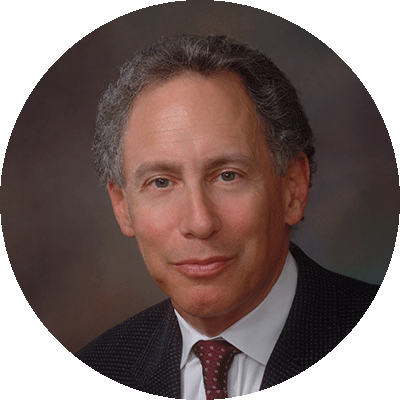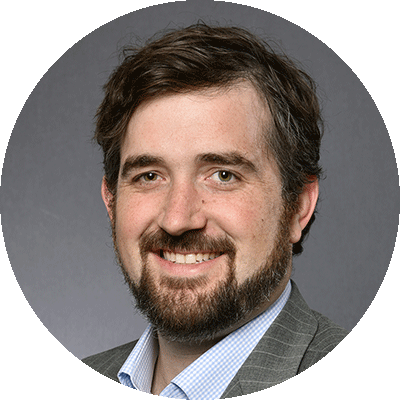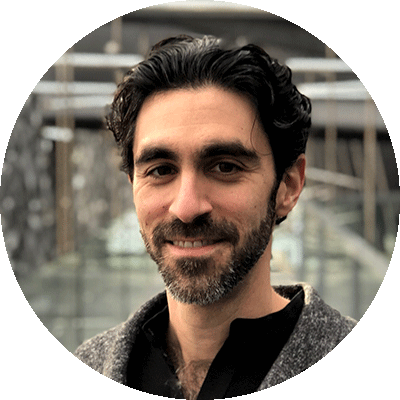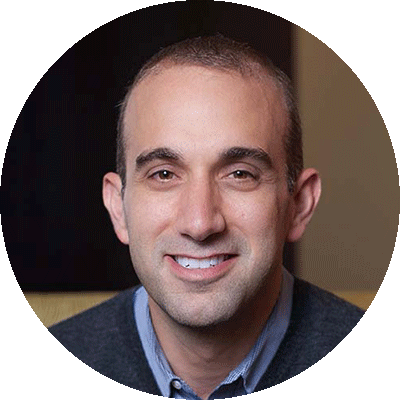-
Value Through the Product Life Cycle: 2021 Law & Economics Symposium
How do life sciences companies create, commercialize, and protect value through the complex life cycle of their products? How have recent changes in scientific practice and the regulatory process affected the value proposition for biopharmaceutical products?
These issues were at the center of Analysis Group’s annual Law & Economics Symposium on current topics in life sciences. The 2021 Symposium, conducted virtually, brought a variety of perspectives to bear on the question of how biotechnology and pharmaceutical companies can optimize product value while continuing to ensure widespread access to critical therapies.
This multifaceted topic was considered by a broad range of academic experts and industry experts, life sciences general counsel, and Analysis Group consultants. Following an introduction by Analysis Group CEO and Chairman Martha Samuelson, Dean David Schmittlein of the MIT Sloan School of Management provided opening remarks.
“I think of Analysis Group and MIT as fellow travelers in a number of respects, certainly with respect to a commitment to fact-based analysis, to careful model building and rigorous inference, and to being a source of ideas that are made to matter.”
– Dean David SchmittleinCreating and Commercializing Value: A Discussion with Professor Robert Langer
In a wide-ranging conversation with Managing Principal Rebecca Kirk Fair, Robert Langer, Institute Professor at the Massachusetts Institute of Technology, touched on his long academic and industry experience, which includes nearly every phase of the product life cycle, from basic research and idea generation, to clinical trials, to commercialization, to post-launch litigation (in expert witness work).
One of the most prominent and frequently cited engineers in history, Professor Langer was the academic co-founder of Moderna, one of the first companies to bring a COVID-19 vaccine to market. His early work on drug delivery, which dates back to the 1970s, provided an important underpinning to the mRNA technology that made several COVID-19 vaccines (including Moderna’s) possible.

“I think having a platform technology has many advantages. Let me use messenger RNA as an example. With a platform technology, you could substitute drug A, drug B, drug C, drug D for that technology. So you could imagine you could have a messenger RNA technology that might treat cancer, another one that might treat heart disease, another that might lead to a COVID vaccine – and, in fact, it did. The second technology, and that’s been key for mRNA, of course, is the delivery system. In this case, that’s the nanoparticles, because you can put any messenger RNA in it. So having a platform technology is really like plug and play, right?”
– Professor Robert Langer
But at first, Professor Langer remarked, “people told me it was a waste of my time,” and in fact his first nine patent applications were rejected. An important lesson he took away from that experience was the value of perseverance: “One of the things I learned is that conventional wisdom is often wrong.” Another lesson that stayed with him throughout his career was the value of working across disciplinary boundaries to turn an idea into a successful product.
An extension of that lesson is that commercialization requires not just the right science but also the right management, something Professor Langer said he learned in starting his first company, Enzytech, after two attempts to license his patents to existing companies. “A great CEO is a really important thing,” he told Ms. Kirk Fair. “I view it as a partnership. I like to think I’m decent on the research side, but they usually have much better judgment on who the business people should be.”
Competing for Value Through the Product Life Cycle: Current Antitrust Perspectives
In a breakout panel moderated by Managing Principal Ted Davis, three academic experts – Amitabh Chandra of Harvard, Craig Garthwaite of Northwestern University, and Margaret Kyle of MINES ParisTech – and Vice President Yao Lu discussed M&A in the pharmaceutical space, the interaction of intellectual property (IP) protections with antitrust policy, and pharmaceutical pricing. Among the points that emerged:
- While pharma acquisitions in general, and so-called “killer acquisitions” in particular, may receive regulatory scrutiny, these transactions often have efficiency-enhancing characteristics.

“There’s been a lot of change in the research and development process along the value chain in how we get drugs. The idea that the firm that should navigate the FDA process, the manufacturing process, and the commercialization process is the same firm that should be doing early-stage innovation doesn’t necessarily make a lot of sense anymore.”
– Professor Craig Garthwaite
Acquisitions Across the Life Cycle
- Exclusivity and patent protection remain essential aspects of the pharmaceutical value proposition, but the Hatch-Waxman Act exists to balance those IP protections with the benefits of generic competition and lower prices. However, looking outside the US can provide a different perspective on the relationship between IP protection and access.

“IP is always a very polarizing subject. The concern, of course, is the access side, and that’s been much more of a worry in poorer countries. And I have work showing that what we fail to appreciate is that IP is often associated with faster access to innovation in these markets. Product patents are generally associated with faster access to new drugs, and over time it seems that the originators are also making greater use of voluntary licensing or differential pricing across countries. So in a way, it’s a win-win.”
– Professor Margaret Kyle
- When addressing the challenge of high drug prices, it is essential to differentiate wholesale acquisition cost, or “list price,” and “net price” received by the manufacturers, which reflects rebates, discounts, and other credits, in order to more accurately characterize the problem.

“There are different types of prices that you can observe for a drug, and the complexity stems from all the players in the supply chain: the manufacturer, the wholesaler, the pharmacy, the pharmacy benefit manufacturer, the health plan, and the patient. So when you think about net prices, you need to account not just for the wholesale acquisition cost, which is like the list price set by the manufacturer, but also for things like rebates and discounts. In the litigation context, this list price-net price gap presents a major challenge.”
– Dr. Yao Lu

“List prices are relevant for consumers, because cost-sharing is almost always tied to list prices. But the net price is what the manufacturer receives, and that’s a confidential number that very few people see. … What’s interesting is that list prices have been growing about 11% a year on average in the past decade, while net prices have only been growing at inflation, 2% a year. So you can see why consumers are angry, but the problem there is a broken insurance offering.”
– Professor Amitabh Chandra
Enhancing Value with Data Science
A session on data science – moderated by Managing Principal James Signorovitch – brought together Ziad Obermeyer of the University of California, Berkeley, Kathleen Gondek of Takeda, and Managing Principal Mihran Yenikomshian and Principal Jimmy Royer to discuss the value – and the risks – of the increasingly frequent application of artificial intelligence to health care. The panelists noted the many benefits from using data science that could be found for drug development and care delivery, including:
- Drug discovery (e.g., closed-loop systems for finding new antibiotics)
- Clinical phase trials (e.g., site recruitment and patient identification algorithms, “siteless studies”)
- Post-launch (e.g., deep-learning models to predict which patients respond to particular treatments)
- Clinical care (e.g., individualizing and prioritizing the use of scarce resources for care delivery)
- Diagnostics (e.g., assessing disease severity, and candidacy for treatment, based on medical images)

“One of the ways I think about where AI is going to be transformative is by thinking of all of the places where human intelligence fails. And as a practicing doctor, if you’re paying attention to your own practice and what’s going on in the medical system, you see many examples of this.”
– Professor Ziad Obermeyer

“It’s very challenging to quantify [the cost efficiencies attributable to AI] because we’re early in the process. But I do think that there are opportunities. If we can [use AI to] shorten the identification and recruitment time in clinical trials by even as much as two or three months, that’s real dollars. I think the other promising piece is having the data available to rule out going down paths that might not be successful.”
– Dr. Kathleen Gondek
These advances, the panelists noted, have the added benefit of efficiency, freeing researchers and clinicians to focus on higher-skill aspects of their work. However, they also have attendant risks and reasons for caution, among them:
- Systemic bias introduced by reliance on the wrong proxy variables, such as cost (which segments populations by socioeconomic characteristics that are often tied to race)
- The potential for applying results to a problem for which an algorithm wasn’t specifically designed
- Algorithmic predictions that are difficult for the layperson to understand, leading to transparency or validation concerns

“We’ve been using unsupervised machine learning methods, such as cluster analysis, to reveal hidden relationships. We build profiles of patients, group them without having to tell the computer what to look for, and then see if there are better outcomes in certain groups. That could be a very big opportunity to look at further.”
– Mihran Yenikomshian

“But when we think back about our profession [as economists], it took quite a bit of time for courts to adopt or accept statistical analysis. I think accepting AI tools is going to be even harder, if courts or lawyers or stakeholders don’t understand what is going on with these models.”
– Dr. Jimmy Royer
Plenary Session: Roundtable with Pharma General Counsel
A roundtable with life sciences general counsel – Shannon Thyme Klinger of Moderna, James Stansel of PhRMA, David Stark of Teva, and Dan Troy of Valo Health – focused on the importance of IP in the commercialization phase. Several members of the panel (which was moderated by Managing Principal Divya Mathur) took issue with the strategy of waiving patent rights for COVID-19 vaccines and other pharmaceutical products, saying that it would threaten innovation in the industry. Most of the panelists favored using incentives to strike a better balance between protecting IP and expanding access to critical life sciences products.
Settling Disputes over Liability and Value: Kenneth Feinberg on Mediation
The final session of the day, with renowned mediator Kenneth Feinberg, brought a personal touch to the topic of resolving disputes that occur post-commercialization. Speaking with Managing Principal Crystal Pike, Mr. Feinberg – who has administered victim compensation funds related to 9/11, Agent Orange, and the Boston Marathon bombings, among other disputes – explained the rationale behind resolving certain conflicts outside the courtroom, and which of these disputes benefit from data and rigorous economic modeling. But he also spoke poignantly of the emotional toll that his work on these unfortunate events has often entailed.

“The toughest part for me is, by far, the emotion of dealing with victims. And you’d better brace yourself. It’s not the law or the economic considerations that make the job so difficult. It is the emotional overhang of 9/11, or the BP oil rig explosion, or the death of individual family members. [That’s what] keeps you up at night, not, what assumptions should we make about economic loss?”
– Kenneth Feinberg
Capping the Day’s Events
In her closing remarks, Susan Hockfield, former president of the Massachusetts Institute of Technology, returned to where Professor Langer had begun: the overarching process leading from basic life sciences research to the widespread adoption of products that can help millions. The sessions, Professor Hockfield remarked, “make me very optimistic about the whole arc, from discovery into the marketplace. [We should] be sure that we have the policies and legal structures to support this kind of work going forward.” ■
-
Our next Law & Economics Symposium will take place on June 8, 2022.
